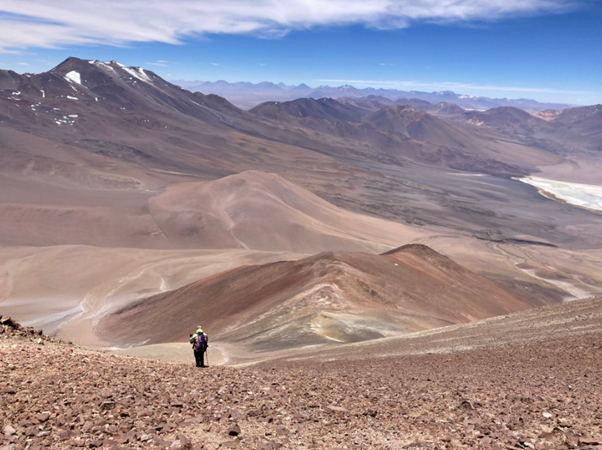Mummified mice have been found on mountain tops in the Andes 6,000 meters (20,000 feet) above sea level. Although only one living rodent has been found under the same conditions, it is hard to explain the murine bodies other than that the mouse has mastered conditions thought to be beyond any mammals.
The tops of mountains in the Andes are often said to be the closest counterparts to Mars on Earth. Transport there being considerably easier, researchers have investigated the region for forms of life in an effort to assess the prospects for survival on the Red Planet. These searches have focused on finding microbes, or perhaps insects, since conditions were considered incapable of supporting mammals. That belief has run into some highly contradictory observations.
Antarctica and Greenland are closer to Mars in temperature than the high Andes, but the thin air and extreme dryness make this region a strong candidate for the best Martian analog. Whatever life manages to persist on the tops of the Andean volcanoes provides a guide to what might be possible in the even more inhospitable conditions on the planet itself.

It’s not as barren as Mars, but Volcán Salín (Puna de Atacama, northern Chile) does a good impression.
Image Credit: Mario Pérez Mamani
Professor Jay Storz of the University of Nebraska, Lincoln was astonished when the team he was part of found a mummified mouse at the summit of Volcán Salín, lying by the side of a rock pile. Reasoning that what happens once can happen again the team kept an eye out and found seven others on the same mountaintop. A handful of others were found on other mountaintops of similar forbidding altitude, sometimes accompanied by the bones of dead mice.
“Well-trained mountain climbers can tolerate such extreme elevations during a one-day summit attempt, but the fact that mice are actually living at such elevations demonstrates that we have underestimated the physiological tolerances of small mammals,” said Storz in a statement.
The team even found one live mouse near the top of a nearby, even higher, volcano: Llullaillaco. On its own, this might have been considered very lost, perhaps disoriented by altitude sickness, but with the dead counterparts it more likely indicates a continuing behavior,
Although mummification is best known from the deliberate preservation of the dead in Egypt and Peru, it can also occur naturally. There’s certainly no reason to think that any hardy humans were climbing to the top of Volcán Salín in order to scatter these preserved bodies.
Indeed, if this had been the case someone would have to be very dedicated: on two of the volcanoes the mummified mice were no more than a few decades old, but a third site held mice estimated to be up to 350 years old.
These intrepid rodents were found to be Phyllotis vaccarum, a leaf-eared mouse already described from lower altitudes. Genetic analysis revealed equal numbers of males and females.
“The discovery of the mouse mummies on the summits of these freezing, wind-scoured volcano summits was a huge surprise,” Storz said. “In combination with our live-capture records of mice on the summits and flanks of other high-elevation Andean volcanoes, we are amassing more and more evidence that there are long-term resident populations of mice living at extreme elevations.”

It seems an unlikely place to set traps for vertebrates, but after the mummified mouse finds the team decided to try.
Image Credit: Naim Bautista
Just because we know they’re there does not mean we understand how, however. Temperatures at these locations never exceed freezing point, oxygen is scarce and there’s no obvious food source. The Incas left sacrifices at locations like this, but 500 years later that would not represent the basis for a food chain.
To answer one of the many questions the discovery raises, Storz’s team is conducting research on captive mice collected at high (although not this high) elevations. They hope to learn what allows them to function with less than half the oxygen available at sea level.
No one thinks we’ll find mice (or spiders) on Mars, but every finding like this emphasizes that it’s a bad idea to write biology off.
The findings are published in Current Biology.
Source Link: Mummified Mice Found Atop Mountain Survived “Mars-Like” Conditions Thought Beyond Mammals